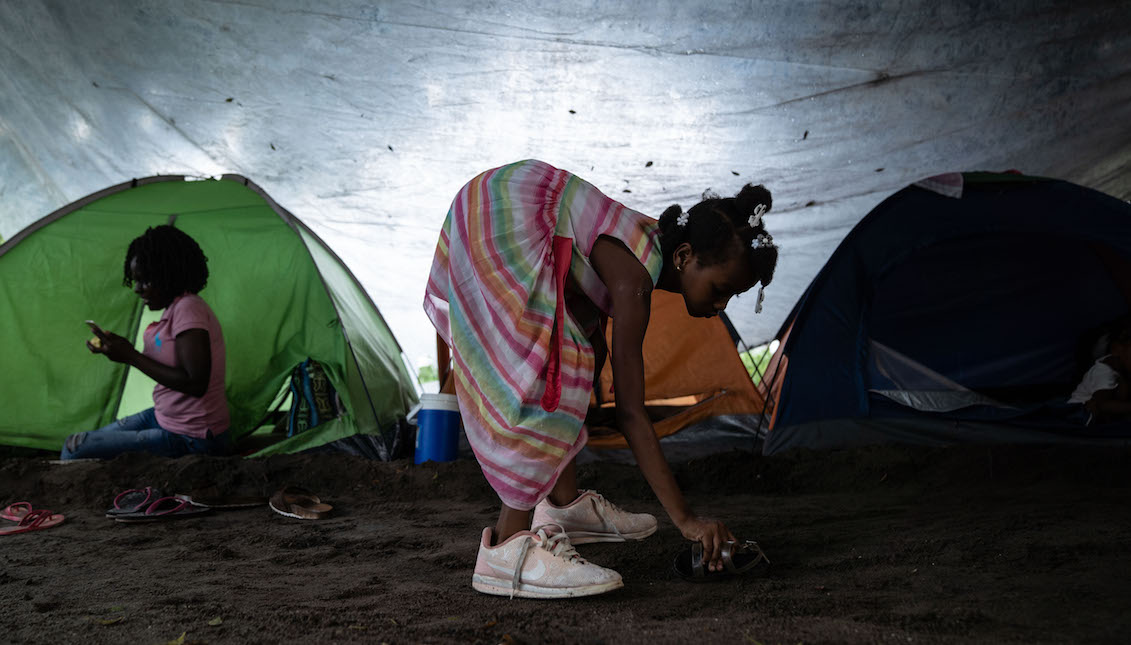
Immigrants in Mexico: the other side of the crisis
While the US government demonizes migratory flows and detains people in inhumane conditions, the crisis on the other side of the border with Mexico is just as…
Mexican President Andres Manuel Lopez Obrador promised to be the “president of the poor” and offer refuge and employment to Central American refugees. But, in order to appease U.S. President Donald Trump, he has become nothing of the sort. On the contrary.
While the media draft dramatic headlines about the conditions of immigrants detained by the Border Patrol in the United States, hundreds of thousands of people are suffering an even worse fate on the Mexican side of the border.
And nobody seems to notice or care.
After the arrival via caravans of several waves of people from the poorest corners of Central America, the Mexican government was forced to take control measures, especially after Donald Trump's threats Washington would impose economic tariffs on its main commercial ally.
The solution of the government of Andrés Manuel López Obrador (AMLO) has been to deploy soldiers and the National Guard and carry out raids on hotels, buses and trains, "creating scenes of tearful Central American mothers piled into police trucks along with their children and overflowing detention centers in deplorable conditions," the Associated Press reported.
The strategy of the Mexican government radically contradicts AMLO's promises when coming to power as "the president of the poor" last year.
"We are going to offer employment, work to Central American migrants," he claimed during his campaign speeches.
But the flood of immigrants between Mexico and the United States deeply divided Mexico - between those who supported humanitarian measures and those who felt threatened by the arrival of refugees.
“The truth is that it is a problem for everyone. It’s better that they are sent back to their countries,” said Jorge Parada León, a Mexico City message delivery worker, to AP. “Crossing Mexico the way they do is dangerous, a lot of them have died… they should fix the problems they have in their home countries.”
This might be, perhaps, the reason why we haven't heard a lot about the multiple human rights violations in detention centers for immigrants in Mexico such as the so-called Siglo XXI Migration Station in Tapachulas (Chiapas).
Already during 2017, the detained population - most of whom were of Cuban origin – carried out demonstrations to denounce "extortion, abuse, assault and harassment," as the Quadratín Agency reported at the time.
RELATED CONTENT
The situation was so severe that a group of detainees "went on a hunger strike and sewed their mouths" to draw the attention of the Mexican authorities to the abuses committed.
Today, Tapachulas is once again the focus of the crisis.
Being the first large city on the border with Guatemala, Tapachulas currently concentrates thousands of migrants who are feeling "trapped," according to the BBC.
Between the extreme surveillance of the National Guard and the raids, the migrants who were preparing to cross Mexican territory have been basically trapped, especially after the immigration offices of the region saw their capabilities exceeded and cannot process all the requests for asylum.
According to the activist Luis García Villagrán, "Trump's real wall is in the south."
"The wall here is the militarization of the border and a series of exaggerated bureaucratic procedures," he said.
In the meantime, the streets of the cities bear witness to the misery and mistreatment of those who flee from one hell to another.











LEAVE A COMMENT:
Join the discussion! Leave a comment.